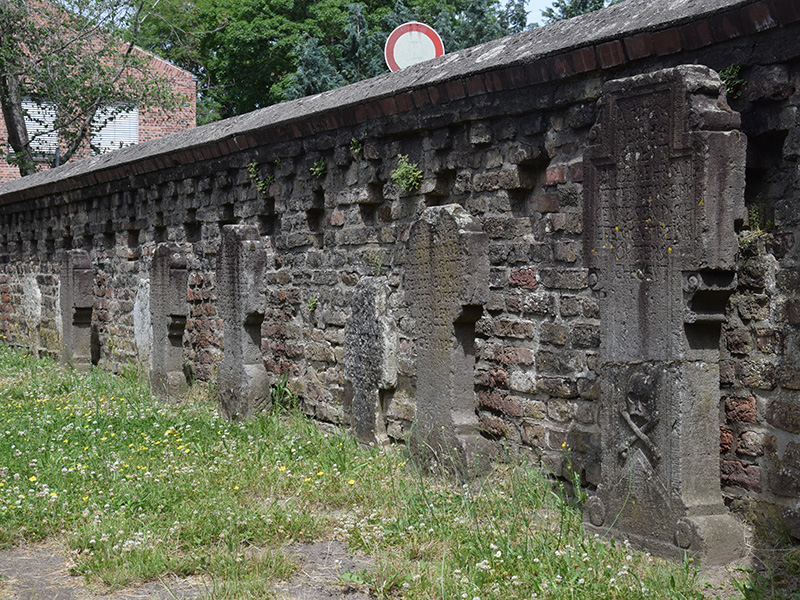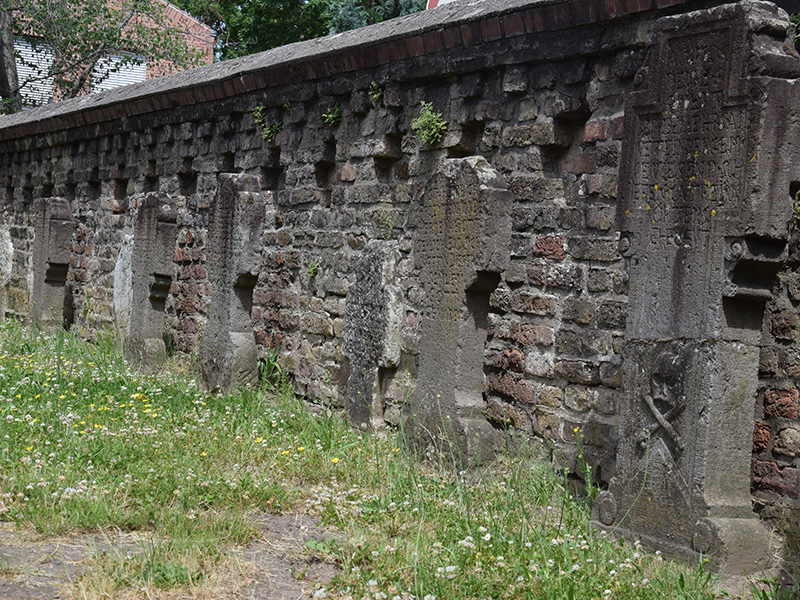
HISTORICAL INFORMATION ABOUT THE VILICH CEMETERY
On this page you will find further information about the Vilich cemetery from the Denkmal- und Geschichtsverein Bonn-Rechtsrheinisch e.V. (Monument and History Society Bonn-Rhine).

The Vilich Cemetery
Today's Catholic cemetery in Vilich was once built 200 years ago between the former cemetery of the parish church of St. Paul, which was destroyed by a flood in 1765, and today's collegiate church of St. Peter. Some of the 240 grave crosses even date back to the 16th century.
The Catholic cemetery in Vilich is one of the oldest in Bonn. Originally a churchyard, the burial ground is now in municipal care. Today, it is also no longer recognisable that it was laid out between the former cemetery of the parish church of St. Paul, destroyed by a flood in 1765, and today's collegiate church of St.Peter. Of the two historic burial sites, only the 240 grave crosses in front of and in the cemetery wall remain, the earliest examples of which date back to the 16th century.
"With the beginning of the 19th century," writes local historian Carl Jakob Bachem in a historical treatise on the history of the Vilich cemetery, "a gradual redesign of this large intermediate terrain took place up to the present-day cemetery, around the late baroque high cross. From about 1850, the abandoned medieval parish church and cemetery grounds were reorganised: The small St Paul's ruins area was separated, while in 1874 the first school building was added to the former burial ground on the remaining area. The brick wall with the grave crosses decorating it from the 16th to the 18th century was also built at this time.
Gravesite for large parish
According to Bachem's research, today's "new" cemetery was first occupied around 1800. For a long time, like the churchyard at St Paul's before it, it was the only burial ground for the unusually large parish, which stretched from Beuel to Rheindorf, Vilich to Geislar, via Vilich-Müldorf, Hangelar as well as Pützchen and Bechlinghoven to Kohlkaul and Holzlar.
The cemetery, originally dominated by elms, was densely occupied even after 1945 and reflected the development of cemetery culture of more than a century with the diversity of its gravesites. Today, only a few historical graves from the beginning of the 19th century are still remarkable. The grave of the first mayor of Vilich, Leonhard Stroof (1809 to 1825), has disappeared. He is commemorated by a plaque on the back of the high cross at the entrance to the cemetery. To the left is the grave of his successor Gabriel von Pfingsten (1825 to 1855). The high grave of the third mayor Ignaz Schnorrenberg is located on the first path to the right of the entrance. The location of other important graves, such as that of the Lords of Wasserburg Lede, can be found on an information board at the entrance to the cemetery.
In 1984, the cemetery was listed in its entirety. "Fatally, however, the monument authorities have never actively pursued this special regulation, despite constant reminders from the monument association," says Bachem. He also criticises some of the work carried out by the parks department, which did not even stop at the green growth that was originally so characteristic of the Vilich cemetery.
Source: General-Anzeiger-Bonn
